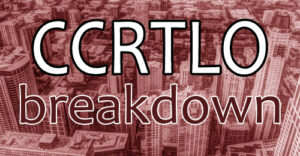 Section 801 – Title, Purpose & Scope
Section 801 – Title, Purpose & Scope
Let’s start at the beginning. This will be the first post in a deep dive taking a look at the newly passed Cook County Residential Tenant and Landlord Ordinance (CCRTLO). As I make my run through the law, understand that I will not necessarily discuss each and every section, but will likely only point out interesting features and facets that might be of note. Cook County landlord should be well advised that there is NO SUBSTITUTE for reading and understanding this law, front to back, on your own. I’ll start with the first section.
42-801(A) – The ordinance gets its name here as the “Cook County Residential Tenant and Landlord Ordinance” and, like the Chicago Residential Landlord and Tenant Ordinance (CRLTO), the ordinance is to be “liberally construed and applied to promote its purposes and policies.” That “liberal construction” is the same language that is used in Section 5-12-010 of the CRLTO. I know – there is going to be some major trouble remembering the two acronyms CCRTLO and CRLTO. Cook County puts the Tenant before the Landlord in their ordinance. Well, as landlords know, both Chicago and Cook County put the tenant before the landlord, but in this case, Cook County does it both literally and figuratively.
42-801(B) – The purpose of the CCRLTO is to “protect and promote the public health, safety, and welfare of its citizens, to establish the rights and obligations of the tenant and the landlord in the rental of dwelling units, and to encourage the tenant and the landlord to maintain and improve the quality of housing.” This language is also cribbed straight out of CRLTO section 5-12-010 but the order of the words “landlord” and “tenant” have been switched.
42-801(C) – The CCRLTO applies to rental agreements made throughout Cook County, including subsidized housing. Again, this language mimics the CRLTO.
42-801(D) – The CCRLTO does acknowledge that it is subject to powers of home rule units established under the Illinois Constitution. What exactly does that mean? It means that the CCRTLO applies throughout Cook County EXCEPT for in those municipalities where there are already regulations that establish both (a) the rights and obligations of both the tenant and (b) the landlord in the rental of dwelling units and (c) those regulations “must contain specific language defining and regulating the relationship between the tenant and landlord, policies protecting and promoting the public health, safety, and welfare of tenants, and remedies under a rental agreement in order to be excluded from” the CCRTLO.
What are the implications of home rule? In those home rule jurisdictions like Evanston, Chicago, Oak Park, and Mt. Prospect that have landlord-tenant regulations, it seems like the CCRTLO does NOT APPLY. It seems that Evanston, Chicago and Mt. Prospect are exempt but that Oak Park is not. However, each of those municipalities and landlords operating in them will need to make a review of section 42-801(D) to see if, in fact, they meet the requirements of that section. What are the implications of that? Well, it is likely that some home rule municipalities with landlord-tenant ordinances might adjust their laws to add some of the provisions under the CCRTLO or the municipalities might repeal their local ordinance in favor of the CCRTLO.
Okay, okay – not the flashiest post ever. Stick with me. This post will lay the foundation for what is to come in future posts as we next examine what properties are actually covered by the ordinance and then move on the impact CCRTLO’s impact on rental agreements in Cook County. Make no mistake, suburban landlords need to mark their calendars for June 1, 2021 and have their leases and landlord practices in order by that date if they don’t want to run afoul of the penalties for violation of the CCRTLO.
